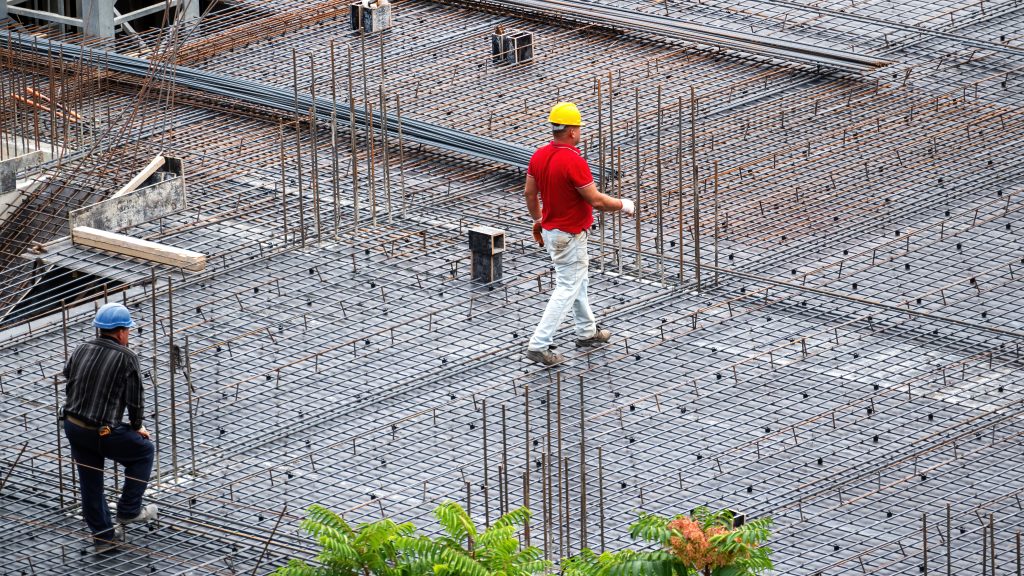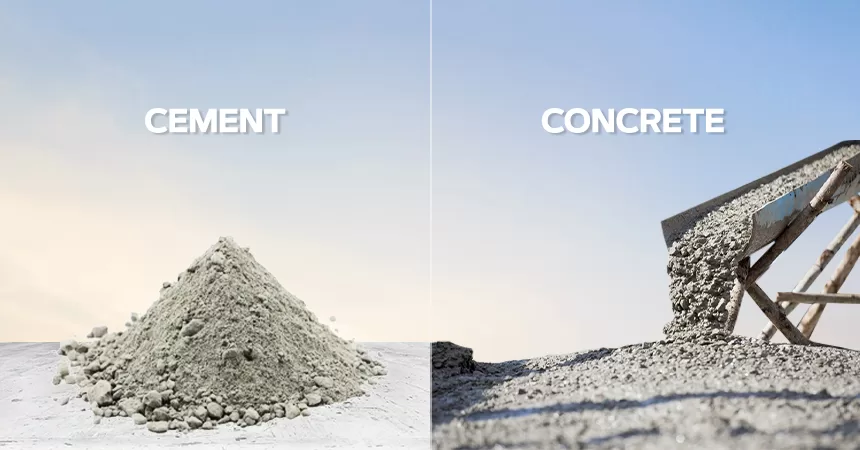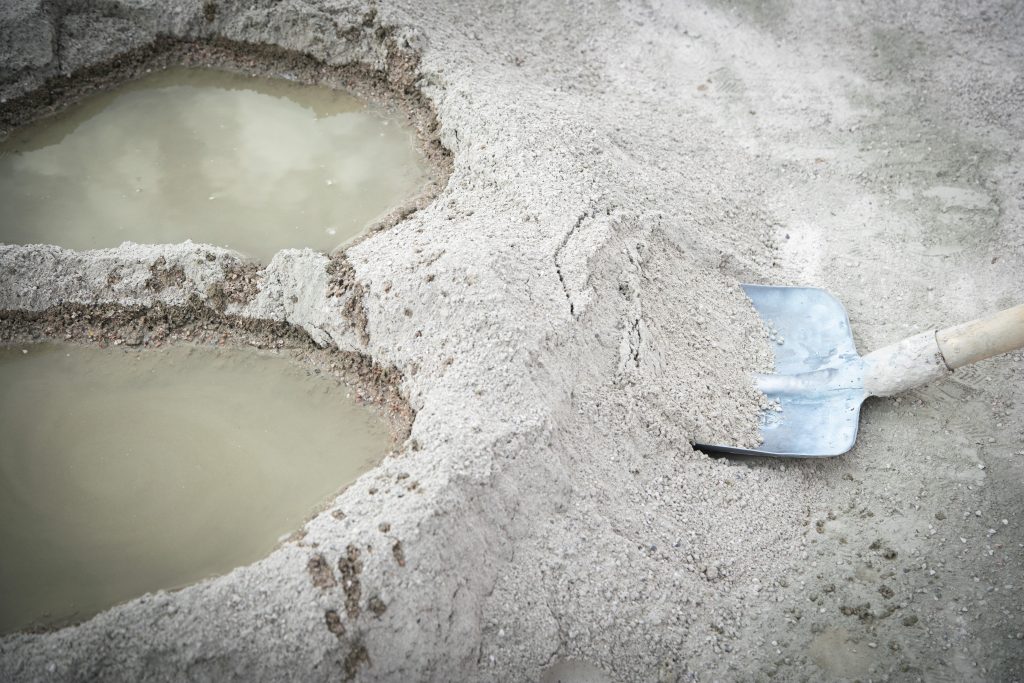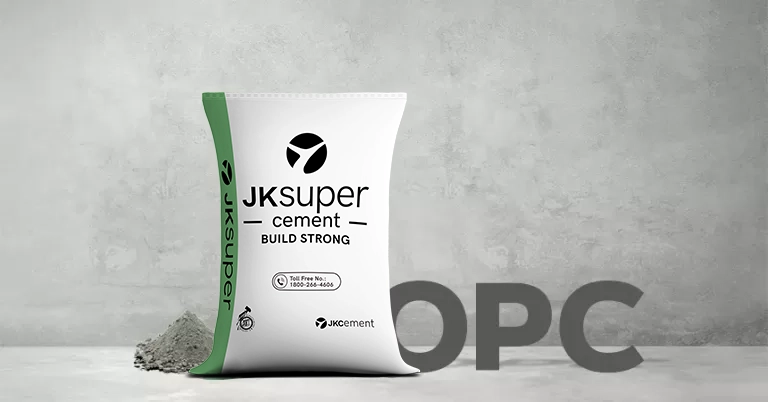From high-rise buildings to bridges, every concrete structure has undergone the curing process to ensure that it gains the required compressive strength for the intended load. The curing process begins after the concrete placement process to aid the concrete settlement and prevent it from unwanted shrinkage. Adherence to prescribed curing techniques can lead to the structures’ longer lifespan and resilience. Read on to learn more about concrete curing and related factors of the curing process.
What Is The Meaning Of Concrete Curing And What Does It Do To The Concrete?
Concrete curing refers to the maintenance of adequate moisture and temperature conditions after the placement of concrete to ensure proper hydration of cementitious materials within the mixture. During the curing process, the hydration process continues as cement particles react with water to form chemical bonds that bind the aggregates, i.e., fine sand, gravel, crushed rocks, etc., together.
How Long Does It Take For Concrete To Cure?
Typically, concrete attains most of its strength within the first 28 days after placement. Initial setting of concrete occurs within hours, where it gains early strength. Yet, achieving the desired strength requires a longer duration. Therefore, a 28-day curing period is considered as a standard benchmark for evaluating the concrete’s strength.
When Is The Right Time To Cure Concrete?
The ideal time to start the curing process is as soon as the concrete has been placed and finished. Once the concrete is poured, it begins the hydration process immediately. To facilitate optimal strength development and durability, the curing process should start before the concrete dries or loses moisture.
How To Cure Concrete?
Here are the stages of the concrete curing process:
-
- Initial curing: After the concrete is placed and finished, the initial curing phase begins immediately. This period requires constant moisture to ensure proper hydration of the cementitious materials. You can employ methods such as sprinkling water, covering it with wet burlap sacks, or applying curing compounds.
- Final curing: Following the initial curing phase, the concrete requires ongoing care to further enhance its strength and durability. This stage extends for an additional 7 to 28 days to maintain continued hydration and strength development.
- Initial curing: After the concrete is placed and finished, the initial curing phase begins immediately. This period requires constant moisture to ensure proper hydration of the cementitious materials. You can employ methods such as sprinkling water, covering it with wet burlap sacks, or applying curing compounds.
Importance Of Curing Concrete
Curing is a fundamental process that significantly influences the ultimate strength, durability, and overall performance of the concrete structure. Here are key reasons why concrete curing is crucial:
-
- Strength development: Properly cured concrete exhibits improved compressive and flexural strength, ensuring it can bear the intended loads and stresses.
-
- Durability and resistance: Effective curing contributes to the durability of concrete by reducing surface cracking and enhancing resistance to environmental factors such as freeze-thaw cycles, chemical attacks, and abrasion.
-
- Mitigation of surface defects: Curing minimises the occurrence of surface defects such as scaling and cracking. By maintaining adequate moisture levels, the risk of shrinkage, cracks and other surface imperfections is significantly reduced.
-
- Improved bonding and adhesion: The curing process influences the development of a strong bond between the cement paste and aggregates. For enhanced strength, you can opt for super strong concrete cement by JK Cement.
Method Of Curing Concrete
According to IS 456:2000, there are two prescribed curing methods that can be employed:
-
- Moist curing: It involves maintaining a consistently damp or wet environment around the concrete surface for an extended period. This method is commonly implemented by continuously applying water to the concrete surface, covering it with a layer of canvas or hessian other moisture-retaining materials, or employing water ponding.
- Membrane curing: It involves using a barrier or membrane to seal the concrete surface and prevent moisture evaporation. These compounds form a thin film or layer that acts as a barrier, such as polyethylene sheets to prevent moisture evaporation. They create a seal that retains moisture, allowing the concrete to continue its hydration process without the need for continuous watering.
- Moist curing: It involves maintaining a consistently damp or wet environment around the concrete surface for an extended period. This method is commonly implemented by continuously applying water to the concrete surface, covering it with a layer of canvas or hessian other moisture-retaining materials, or employing water ponding.
Build structures with uncompromising quality and innovation with JK Cement. Keep your walls dry and healthy with JK Super Protect Cement.
FAQs
What is concrete curing?
Concrete curing is the process of ensuring proper hydration of cement by preventing moisture loss and maintaining the appropriate temperature after the concrete is placed. This is done by keeping the concrete surface wet or damp with water and other curing compounds.
What is the curing time of concrete?
The standard curing time for concrete is 28 days. However, the curing time can depend on factors like cement type, weather conditions, and the use of mineral admixtures. For ordinary Portland Cement, a minimum of 7 days of wet curing is suggested, while with admixtures or blended cements, the period can extend to 10 or 14 days, especially in dry or hot weather.
What is the benefit of curing concrete?
Concrete curing enhances concrete strength, durability, and resistance to cracking. Proper curing mitigates surface defects and ensures the concrete achieves its intended design properties with desired longevity and reduced need for repairs.
What are things that should be avoided while curing concrete?
Do not rush into curing the concrete. First, ensure that your site is prepared and levelled. Also, avoid pouring concrete during bad weather. You mustn’t let fresh concrete get too cold or too hot. Avoid painting concrete surfaces in the first month as chemicals from the paint can negatively impact the curing process. You should also avoid subjecting the new concrete to extreme weights.
What happens if the concrete is not cured properly?
If curing is neglected, concrete faces several potential issues including reduced strength, increased cracking, decreased durability, and surface defects. Without proper curing, the concrete might not achieve its intended properties, leading to compromised structural integrity and increased susceptibility to environmental wearing.














